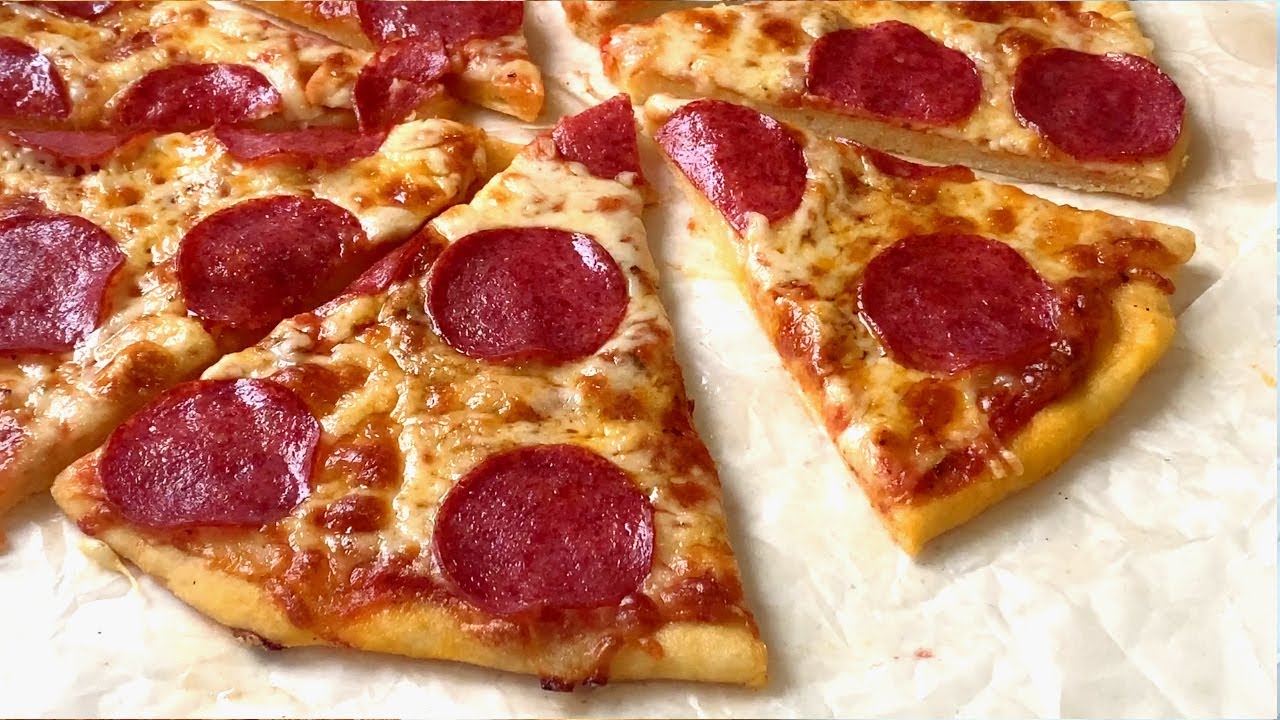In the quest to balance indulgence with mindful eating, many find themselves pondering the nutritional content of their favorite foods. This curiosity leads us to the classic and universally loved slice of pepperoni pizza, a staple in American cuisine and beyond. The question of “How many calories in a slice of pepperoni pizza?” serves as the focal point of our comprehensive article, inviting readers to delve into the intricacies of pizza nutrition. This exploration is not merely about numbers; it’s an insightful journey into understanding how each component, from the dough to the cheese and pepperoni, contributes to the calorie count of a pizza slice.
“How many calories in a slice of pepperoni pizza?” is more than a question; it’s an invitation to engage with food in a more conscious and informed manner. Join us as we uncover the facts, debunk myths, and reveal tips for enjoying pizza in a way that aligns with your health and wellness objectives, ensuring that every bite is as rewarding as it is delicious.
Understanding Pizza’s Nutritional Basics

To make informed choices, we first need to understand what gives pizza its nutritional profile. Let’s analyze the composition of a popular option – pepperoni pizza.
How Many Calories In A Slice Of Pepperoni Pizza?
Discovering how many calories in a slice of pepperoni pizza. It can vary based on slice size, crust thickness, and ingredients. A standard slice can range from 230 to 450 calories.
For example, Papa John’s Pepperoni Original Crust Pizza contains 230 calories, while Little Caesars’ 14-inch Pepperoni Pizza has 280. On average, a typical slice weighs 111g and carries about 313 calories. Remember, pepperoni pizza is rich in carbs, fat, and calories, so enjoy it in moderation as part of a balanced diet.
What Influences the Calories in Pizza?
Variables like toppings, crust, and preparation method all affect pizza’s calorie density:
- Toppings: More meats, cheese = more calories. Veggies = fewer calories.
- Crust: Thick, doughy crusts pack more calories than thin.
- Cooking method: Deep-frying adds fat and calories vs. oven baking.
With this foundation, we can make informed choices to balance nutrition and satisfaction.
Navigating Healthier Pizza Options
Armed with pizza nutrition insights, how can we enjoy pizza while optimizing health value?
Exploring Healthier Pizza Options
- Plant-based toppings: Load up on veggies, swap half the meat for mushrooms.
- Alternative crusts: Cauliflower, chickpea flour, or gluten-free crusts add nutrients.
- Part-skim mozzarella: Saves calories compared to whole milk mozzarella.
- Olive oil drizzle: Adds flavor for fewer calories than butter-brushed crust.
Special Dietary Needs
Read on to learn more : Perfect Pizza Party: How Many Pizzas For 20 People?
You can also adapt pizza to suit different dietary needs:
- Gluten-free: Crusts made from rice flour, tapioca, or chickpeas.
- Low-carb: Opt for cauliflower crust and pile on low-carb veggies.
- Dairy-free: Use vegan cheese or nutritional yeast instead of mozzarella.
Serving Size and Portion Control
Paying attention to portions also helps balance nutrition:
- 1 slice of a 14-inch pizza = approx. 250 calories
- 2 slices of a 14-inch pizza = approx. 500 calories
One or two slices paired with salad or veggies makes for a balanced meal.
Diving Deeper into Pizza Varieties
Let’s analyze how different styles and toppings impact nutritional values.
Calories in Popular Toppings and Pizza Styles
- Pepperoni: 70 calories per slice
- Sausage: 80 calories per slice
- Chicken: 60 calories per slice
- Mushrooms: 5 calories per slice
- Onions: 10 calories per slice
- New York style: Lower calories with thin, foldable crust.
- Deep dish: More dough and cheese means more calories.
- Hawaiian: Ham, bacon, and pineapple toppings add calories.
The Calorie Extremes: Highest vs. Lowest Calorie Pizzas
Highest calories:
- Meat-lover’s with pepperoni, sausage, bacon etc.
- Deep dish with extra cheese and dough.
Lowest calories:
- Thin crust veggie pizza with lots of low-calorie toppings.
- White veggie pizza with broccoli, spinach, and ricotta.
The Impact of Preparation and Ingredients
Preparation choices further influence nutritional values.
Cooking Methods’ Impact
- Baking uses less fat for lower calories than frying.
- Grilling infuses flavor without oil.
- Microwaving before oven cooking reduces fat absorption.
Why Pizza Is Calorie-Dense
- High-fat meats and cheese
- Large portion sizes
- Thick, doughy crusts
The Sodium Content in Pizza
Pizzas average 500-800 mg sodium per slice. Limiting salty meats and jarred sauce controls sodium.
Making Informed Pizza Choices
Let’s apply our nutrition knowledge to make balanced pizza choices.
Ordering Strategies for Healthier Takeout or Delivery
When ordering in:
- Opt for thin crust and pile on veggies
- Choose lighter sauces like white sauce or olive oil bases
- Request less cheese to cut calories
Environmental and Ethical Considerations
Read on to learn more : Plan a Big Party? Find Out How Many Pizzas for 60 People?
Opt for pizzas with:
- Locally sourced ingredients
- Organic produce
- Responsibly raised meats
This limits environmental impact.
Pizza’s Place in a Balanced Diet

What’s the verdict on pizza’s role in a healthy diet?
Can Pizza Be Part of a Healthy Diet?
Yes, when enjoyed in moderation. The key is balance. A small serving of pizza paired with salad or veggies can fit into a nutritious diet.
Psychological Effects of Eating Pizza
Beyond nutrients, our mental approach matters too. Slow down, savor each bite, and tune into hunger cues before reaching for more. Don’t mindlessly eat pizza while distracted.
Pizza and Weight Loss
You can incorporate pizza into a weight loss plan by:
- Sticking to 1 slice
- Loading up on veggie toppings
- Pairing it with a healthy side salad or veggies
Portion control and nutrient-dense toppings are key.
Adapting Pizza to Fit Various Dietary Plans
Pizza can also suit different diet styles with the right adaptations.
Incorporating Pizza into Various Diets
- Keto: Choose low-carb cauliflower crust and top with proteins and veggies.
- Mediterranean: Opt for thin, crispy crust with olive oil, veggies, and seafood.
- Vegetarian: Load up on veggie toppings, swap in vegan cheese.
- Low-sodium: Make your own fresh sauce and dough to control sodium.
Nutritional Innovations and Trends
Today’s growing health awareness is driving new nutritious pizza options:
- Alternative crust ingredients like cauliflower and chickpeas
- Creative veggie toppings like beets, broccolini, and Brussels sprouts
- Vegan cheese replacements like Miyoko’s mozzarella
- Nutrition calculators for customizing your perfect healthy pizza
Conclusion: How Many Calories In A Slice Of Pepperoni Pizza?
Pizza can absolutely coexist in a balanced, nutritious diet with some simple wisdom. Opt for thinner crusts, pile on the veggies, stick to reasonable portions, and savor mindfully. Additionally, adapt pizza to fit your particular dietary needs, whether low-carb, vegan, or sodium-conscious. With all the nutritious innovations and options today, you can still enjoy pizza as part of healthy eating. Pizza serves as a prime example of how our eating mentality and choices impact how foods fit into our lifestyles.

Chef John Sebastian has been cooking up a storm at his simple place for years. Offering a variety of international foods, Chef John Sebastian has something for everyone- and he makes it all look easy!
He’s been featured in various food magazines and cooking shows, and his restaurant has become a local favorite in the community. When he’s not in the kitchen, Chef John Sebastian enjoys spending time with his family.